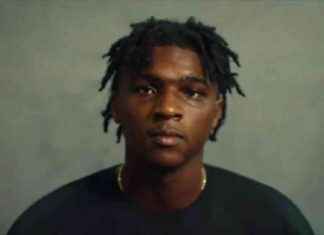For more than 65 years, Shinran Shonin, in the form of a statue, has resided on Riverside Drive, on the Upper West Side (UWS) of Manhattan, with privileged views of the Hudson River.
His daily presence, enduring the elements without flinching, perhaps because of how much he already suffered, made those who passed by his side not notice his presence. But the film Oppenheimer, in which the tribulations of the creator of the atomic bomb are glossed, has put him in the public eye.
The bronze figure, dressed in travel clothes and the typical hat for walking the road, survived Hiroshima, the first nuclear docking in history.
It was located less than three kilometers from where the impact occurred.
Its transfer to the Big Apple occurred in 1955. Although initially it was to be located in the United Nations (UN) complex, this option was ruled out due to lack of space, they excused themselves.
He ended up in the UWS. They say that the orange bands it exhibits are due to nuclear impact. When it was installed, rumors circulated that it had radioactivity and parents prevented their children from going through it or from doing so without breathing.
This home can be seen as a whim of fate. He found his place at the entrance to the New York Buddhist Church, in the same neighborhood where Robert Oppenheimer was born and raised. The same neighborhood and the same street. The scientist’s family also resided on Riverside Drive, a few streets further south on the island. The building remains the same when seen from the outside, although the floors have doubled inside. There is no plaque that commemorates its illustrious resident.
The year that Shinran Shonin, the founding monk of Jodo-Shinshu, the branch of Buddhism most practiced in Japan, landed, Oppenheimer had already fallen from grace and his work on the Manhattan project, which allowed the development of the atomic bomb, was being questioned. Although everything in the film is centered in New Mexico, the work began in New York. But Manhattan wasn’t named after the leader of the research initiative, instead it was due to Colonel Leslie Groves (played by Matt Damon).
Commissioned by Seiicchi Hirose, a steel businessman, the statue dedicated to the Buddhist monk was created in 1937 and was part of a package of five identical ones that were distributed throughout Japan.
While several of these pieces were recycled in the manufacture of ammunition during World War II, the one installed on a hill overlooking Hiroshima was saved due to its popular appreciation. It also survived the nuclear attack on August 6, 1945 ordered by President Truman.
After the war, Hirose made contact in the United States with Hozen Seki, a Buddhist and “minister” of the Jodo-Shinsu branch, who immigrated to the United States, a route that brought him to New York in 1938. After the attack on Pearl Harbor In 1941, Seki suffered internment in a concentration camp, like so many thousands of American-Japanese, where he remained until the end of the war in 1945.
That contact resulted in the statue crossing the Pacific and becoming just another resident of that quiet area. A carved stone plaque describes the statue as “a testament to the devastation of the atomic bomb and a symbol of lasting hope for world peace.”








